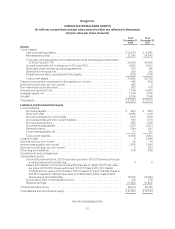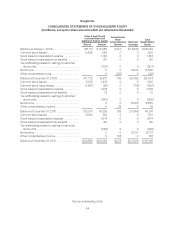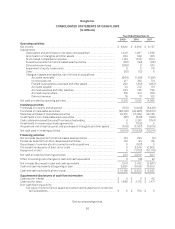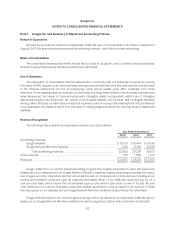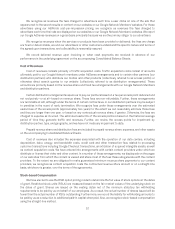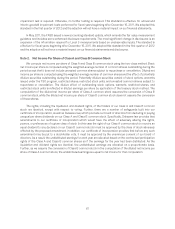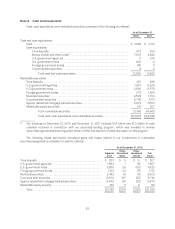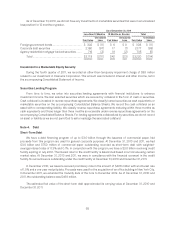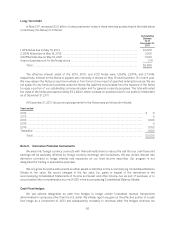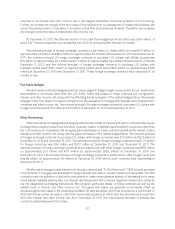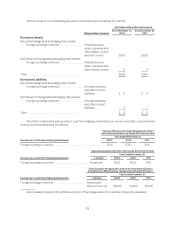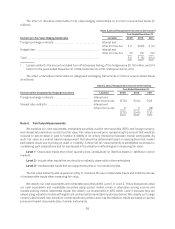Google 2011 Annual Report Download - page 88
Download and view the complete annual report
Please find page 88 of the 2011 Google annual report below. You can navigate through the pages in the report by either clicking on the pages listed below, or by using the keyword search tool below to find specific information within the annual report.12 months until maturity. After consideration of our risk versus reward objectives, as well as our liquidity
requirements, we may sell these securities prior to their stated maturities. As we view these securities as available
to support current operations, we classify securities with maturities beyond 12 months as current assets under the
caption marketable securities in the accompanying Consolidated Balance Sheets. We carry these securities at fair
value, and report the unrealized gains and losses, net of taxes, as a component of stockholders’ equity, except for
unrealized losses determined to be other-than-temporary, which we record as interest and other income, net. We
determine any realized gains or losses on the sale of marketable securities on a specific identification method, and
we record such gains and losses as a component of interest and other income, net.
Non-Marketable Equity Securities
We have accounted for non-marketable equity securities primarily at cost because we do not have significant
influence over the underlying investees.
Impairment of Marketable and Non-Marketable Securities
We periodically review our marketable securities, as well as our non-marketable equity securities, for
impairment. If we conclude that any of these investments are impaired, we determine whether such impairment is
other-than-temporary. Factors we consider to make such determination include the duration and severity of the
impairment, the reason for the decline in value and the potential recovery period, and our intent to sell, or whether it
is more likely than not that we will be required to sell, the investment before recovery. If any impairment is
considered other-than-temporary, we will write down the asset to its fair value and take a corresponding charge to
our Consolidated Statements of Income.
Accounts Receivable
We record accounts receivable at the invoiced amount and we do not charge interest. We maintain an
allowance for doubtful accounts to reserve for potentially uncollectible receivables. We review the accounts
receivable by amounts due by customers which are past due to identify specific customers with known disputes or
collectability issues. In determining the amount of the reserve, we make judgments about the creditworthiness of
significant customers based on ongoing credit evaluations. We also maintain a sales allowance to reserve for
potential credits issued to customers. We determine the amount of the reserve based on historical credits issued.
Property and Equipment
We account for property and equipment at cost less accumulated depreciation and amortization. We compute
depreciation using the straight-line method over the estimated useful lives of the assets, generally two to five
years. We depreciate buildings over periods up to 25 years. We amortize leasehold improvements over the shorter
of the remaining lease term or the estimated useful lives of the assets. Construction in progress is related to the
construction or development of property (including land) and equipment that have not yet been placed in service
for our intended use. Depreciation for equipment commences once it is placed in service and depreciation for
buildings and leasehold improvements commences once they are ready for our intended use. Land is not
depreciated.
Software Development Costs
We expense software development costs, including costs to develop software products or the software
component of products to be marketed to external users, before technological feasibility of such products is
reached. We have determined that technological feasibility was reached shortly before the release of those
products and as a result, the development costs incurred after the establishment of technological feasibility and
before the release of those products were not material, and accordingly, were expensed as incurred.
59




